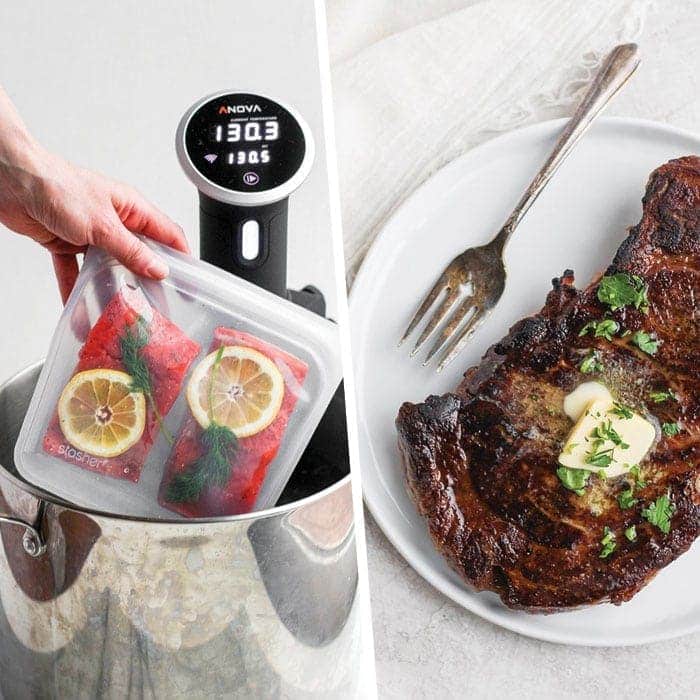Cooking sous vide has been a popular method in restaurant kitchens for quite a while now, but it just hasn’t caught on in home kitchens. It’s a pity, as it’s a great way to cook tougher cuts of meat, or even veggies or eggs, with spectacular results. I sous vide a pork butt roast the other day for 18 hours, and it was delicious and absolutely falling apart. And it’s a hands-off process!
Cooking sous vide (under vacuum in French) is accomplished by using an immersion circulator ($50 and up), a tube that is attached to the inside of a large pot, filled with water, and the circulator will maintain a constant, exact temperature for a specific period of time. What is to be cooked is placed and sealed in a plastic bag, sealed with no air inside. It does take along time, but it requires little attention, other than occasionally topping off the water level.
The one disadvantage to sous vide is that because of the low heat, meats have to be seared to finish and add color and a nice crispy crust. But it is a small disadvantage when considering the tender and delicious results.
Here are some examples of cooking time and temp
- Pork roast 134 F, 6 hours
- Ham 140 F, 4 to 6 hours (bone-in)
- Steaks, 130 F, 2 hours
- Bone in pork chop (1½ in. thick) 140 F, 1.5 hour
Basic Instructions
Fill a large pot with water, attach the immersion circulator and set the exact temp and time for what you are cooking. Season the meat aggressively, place in a vacuum bag or a Ziploc bag, but it is important to get all of the air out. Cook for the amount of time required, remove from the bag, and sear in a dry cast iron skillet until the meat is brown and crusty.
I really do think you will be impressed with the results. Cooking low and slow, a classic chef admonishment to beginners to attain tenderness is the underlying concept, and makes for a lovely texture as well, never stringy. This is a dish you can put on in the morning and by supper time have a great meal ready for your family. Meats are the normal subject for sous vide, but many people rave about the texture of eggs when cooked this way. To be honest, I have never tried vegetables, but I have read that asparagus is especially good with this treatment. It really is a minor investment, for such a time-saving device, with spectacular results too!




